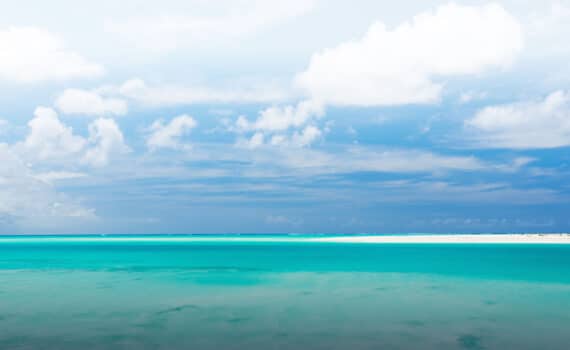Surfing is more than just a sport; it’s a thrilling adventure that challenges both body and mind. For seasoned riders looking to take their skills to the next level, mastering advanced techniques can make all the difference in catching and riding those perfect waves. Whether you’re aiming to conquer big wave surfing or fine-tune your paddling technique, there’s always room to grow in this dynamic water sport.
In this guide, we’ll dive into expert tips for surfing that will help experienced surfers enhance their performance. We’ll explore advanced wave reading techniques, discuss how to perfect your bottom turn for maximum power and speed, and introduce some high-level maneuvers to add to your repertoire. Plus, we’ll look at ways to optimize your equipment for peak performance. So grab your board and get ready to elevate your surfing game with these pro-level insights.
Mastering Advanced Wave Reading Techniques
Mastering advanced wave reading techniques is crucial for seasoned surfers looking to enhance their performance. By honing these skills, surfers can identify prime takeoff spots, anticipate wave behavior, and adapt to changing conditions with ease.
Identifying Prime Takeoff Spots
Experienced surfers know that selecting the right wave is key to a successful ride. To identify prime takeoff spots, surfers should look for taller waves with distinct dark lines on the horizon. The peak, or the tallest part of the wave, is where the wave will start breaking. Surfers should aim for waves with long, gradual shoulders, as these offer the best potential for a smooth, extended ride [1].
Anticipating Wave Behavior
Reading the ocean effectively allows surfers to position themselves optimally and make split-second decisions. By analyzing wave sets, understanding wind and tide impacts, and recognizing ocean topography, surfers can better predict how a wave will behave [2]. This skill involves observing the angle of the wave compared to the skyline and identifying the steepest side, which indicates the direction the wave will break [3].
Adapting to Changing Conditions
Surfing conditions can change rapidly, requiring surfers to adapt their approach constantly. Factors such as tides, swell size, and wind direction all play a role in shaping wave behavior. Surfers should pay attention to how these elements affect wave formation and break patterns throughout their session [2]. By staying vigilant and adjusting their strategies accordingly, surfers can maximize their wave count and improve their overall surfing experience.
Perfecting Your Bottom Turn for Power and Speed
The bottom turn is the backbone of performance surfing, setting up every maneuver on the wave face. Mastering this technique is crucial for seasoned riders looking to enhance their surfing skills. Let’s explore the key aspects of executing a powerful and speedy bottom turn.
Proper Body Positioning
To achieve an effective bottom turn, proper body positioning is essential. As you drop into the wave, compress your body low by bending your knees and lowering your center of gravity. This compression helps maintain balance and control over your surfboard. Keep your feet centered on the stringer and distribute your weight evenly between both feet [4].
As you reach the bottom of the wave, transition your weight towards the inside rail, which is closest to the wave face. This weight shift forces the wave’s upward energy underneath the board, generating the necessary speed for your turn. Use your shoulder to lead your body in this direction, and consider placing a hand on the wave face to promote balance and create a pivot point [5].
Timing and Execution
Timing is crucial when performing a bottom turn. Start by dropping into the wave as close to the peak as possible to generate maximum speed. As you approach the trough, initiate your turn by applying pressure to the inside rail. This action digs the rail into the water, propelling you towards the shoulder with increased speed [6].
As your surfboard begins to face the upper portion of the wave, shift more weight to your back foot. This weight distribution helps steer the board in the desired direction. Simultaneously, twist your hips and chest towards the upper wave face, using your front shoulder as a guide [5].
Common Mistakes to Avoid
Several common mistakes can hinder your bottom turn performance. One frequent error is attempting to perform the turn too high on the wave face. Remember, a good bottom turn happens near the trough, not on the upper portion of the wave [5].
Another mistake is leaning too far over the inside rail, which can cause you to dig the rail too deeply and lose balance. Maintain a balanced stance and avoid putting excessive weight on your front foot, as this can stall your surfboard or lead to a fall [7].
Lastly, be mindful of your speed management. If you have too much speed and don’t apply weight to the right part of the board, it becomes challenging to navigate the turn effectively. Practice finding the right balance between speed and control to perfect your bottom turn technique [8].
Advanced Maneuvers for Experienced Surfers
Seasoned surfers looking to elevate their skills can focus on mastering advanced maneuvers that add flair and excitement to their rides. These techniques require precision, timing, and a deep understanding of wave dynamics.
Cutbacks and Carves
Cutbacks are essential for staying in the wave’s power zone. They involve making a sharp turn back toward the breaking part of the wave, requiring precise timing and balance. Carves, on the other hand, are faster and more vertical turns executed in the pocket of the wave. They showcase a surfer’s speed and power, helping to maintain momentum and control throughout the ride.
Aerial Techniques
Aerial maneuvers have revolutionized modern surfing, pushing the boundaries of what’s possible on a wave. To perform an aerial, surfers need to generate significant speed, find a suitable launch point on the wave, and project themselves into the air. The key to successful aerials lies in maintaining balance while airborne and landing smoothly to continue the ride. Popular aerial variations include the rodeo flip and alley-oop, which involve complex rotations and flips.
Barrel Riding Strategies
Barrel riding, often considered the pinnacle of surfing, requires a combination of skill, courage, and wave reading ability. To enter a barrel, surfers must position themselves in the critical section of the wave as it begins to hollow out. Maintaining a low, compact stance and keeping eyes focused on the exit point are crucial for successfully navigating through the barrel. Experienced surfers often use subtle adjustments in body position and board angle to control their speed and trajectory within the barrel.
Fine-Tuning Your Equipment for Peak Performance
Choosing the Right Board Shape
For seasoned surfers, selecting the right board shape is crucial for optimizing performance in various wave conditions. Hybrid boards offer versatility, combining elements from different surfboard types to create a balanced option for diverse wave conditions. These boards provide an optimal blend of speed and maneuverability, making them an excellent choice for surfers seeking adaptability. When choosing a board, consider factors such as your skill level, the type of waves you’ll be riding, and your personal preferences.
Fin Setup Optimization
The fin configuration of your surfboard plays a vital role in determining its performance in the water. The thruster setup, consisting of three fins, is a popular choice among surfers due to its balance of control, drive, and maneuverability. This configuration allows for sharp turns on the wave’s face and is suitable for various wave conditions. For those seeking increased speed and drive, especially in small to medium waves, the quad setup with four fins offers a looser feel. Experimenting with different fin configurations can help you tailor your board’s performance to your individual preferences and wave conditions.
Wax and Traction Pad Considerations
When it comes to traction, surfers have traditionally relied on surf wax. However, alternatives like clear surfboard traction pads are gaining popularity. These pads offer several advantages over traditional wax, including durability, cleanliness, and environmental friendliness. Traction pads provide consistent grip throughout your session, eliminating the need for frequent reapplication. They also keep your board looking fresher for longer and prevent sand accumulation. When choosing between wax and traction pads, consider factors such as your personal preference, the type of waves you’ll be riding, and your commitment to environmental sustainability.
Conclusion
Mastering advanced surfing techniques has a profound impact on a rider’s performance and enjoyment of the sport. From honing wave reading skills to perfecting bottom turns and executing high-level maneuvers, seasoned surfers have numerous avenues to enhance their abilities. Fine-tuning equipment choices also plays a crucial role in optimizing performance across various wave conditions.
To take surfing skills to the next level, it’s essential to practice consistently and push personal boundaries. By focusing on these expert tips and techniques, experienced surfers can continue to grow and evolve in their craft. Remember, surfing is a lifelong journey of learning and improvement, with each wave offering a new chance to refine skills and experience the thrill of riding the ocean’s power.
FAQs
What is typically the most challenging aspect of learning to surf?
The most challenging aspect of learning to surf often varies by the individual, but for many beginners, it is initially difficult to simply stand up on the board and catch a wave. This challenge encompasses mastering a blend of strength, balance, and coordination, along with the ability to read and respond to the waves effectively.
How can I improve my paddling skills in surfing?
To enhance your paddling skills in surfing, incorporating exercises like pushups can significantly build your shoulder and back strength. Regular swimming and frequent paddling are also highly effective. A pro tip to consider is to slightly swivel your shoulders with each stroke to increase your speed, though it might reduce your stability slightly.
What are the basic rules of etiquette every beginner surfer should know?
Beginner surfers should adhere to several key rules of etiquette such as observing right of way to determine who has the priority on a wave, avoiding ‘dropping in’ on someone else’s wave, not ‘snaking’ or cutting in line, not hogging waves, apologizing for any mistakes, respecting local surfers, learning the correct way to paddle out, and choosing surf spots that match their skill level.
What strategies can help me progress more quickly in surfing?
To accelerate your progression in surfing, it’s crucial to use the appropriate surfboard and to not rush your learning process. Consistency is key. Focus on paddling efficiently and mastering your pop-up technique, which are essential for moving from white water to green waves. Additionally, learning how to read the ocean and familiarizing yourself with surfing rules and etiquette can greatly aid in your improvement.
References
[1] – https://www.youtube.com/watch?v=l6iz_hMM3q4
[2] – https://caparicasurfacademy.com/en/instruction-techniques/reading-ocean-waves/
[3] – https://www.booksurfcamps.com/news/how-to-read-waves
[4] – https://www.youtube.com/watch?v=BVPkWeoXqas
[5] – https://www.boardcave.com/surf-school/how-to-bottom-turn?srsltid=AfmBOorttUiwVt3kcv0t4-M6otmEtox9jOgQ-64LGUqUmAsIBdte-H-K
[6] – https://tutorials.barefootsurftravel.com/articles/proper-bottom-turn/
[7] – https://www.lapointcamps.com/blog/how-to-master-your-bottom-turn/
[8] – https://www.youtube.com/watch?v=wGQJRbrp9rI


